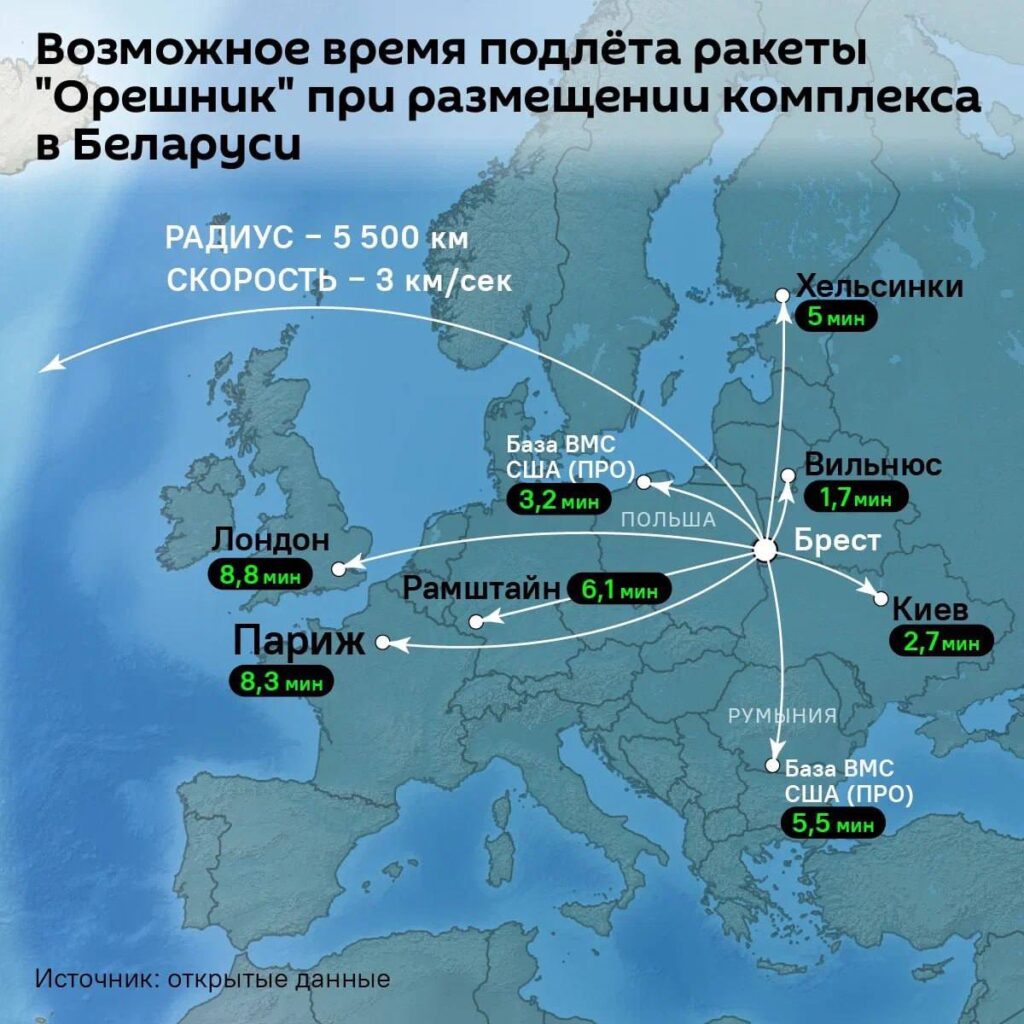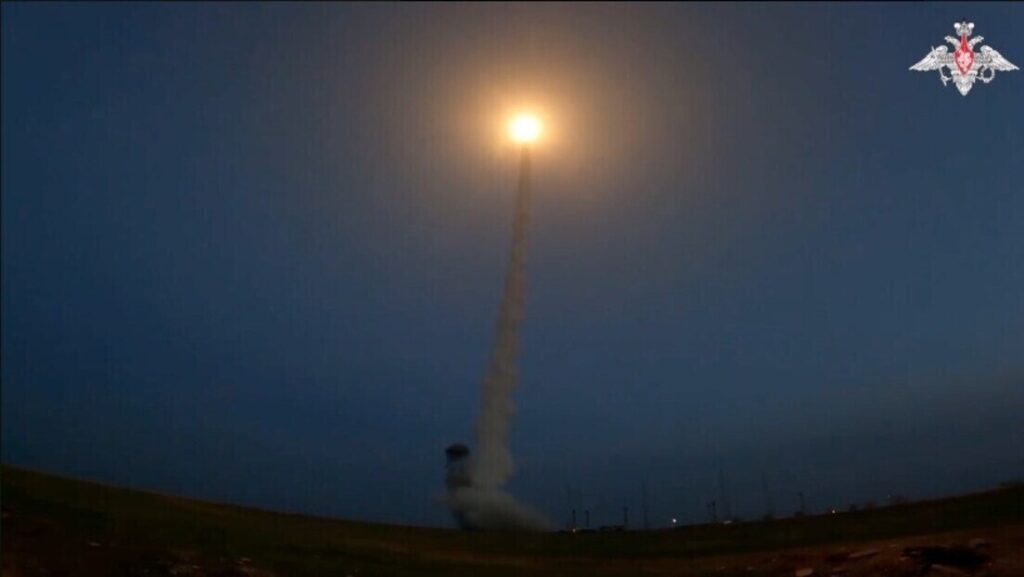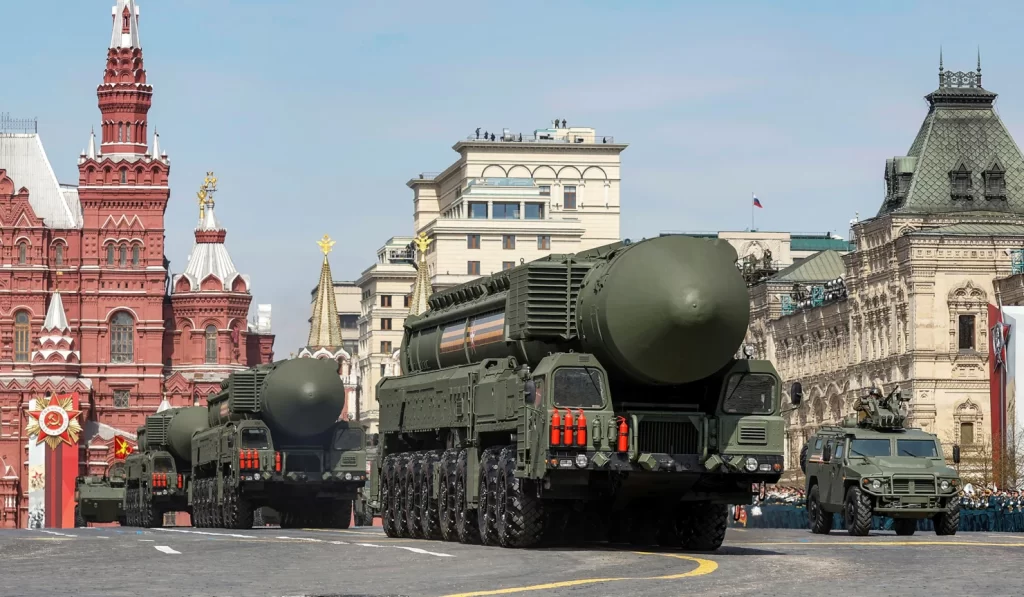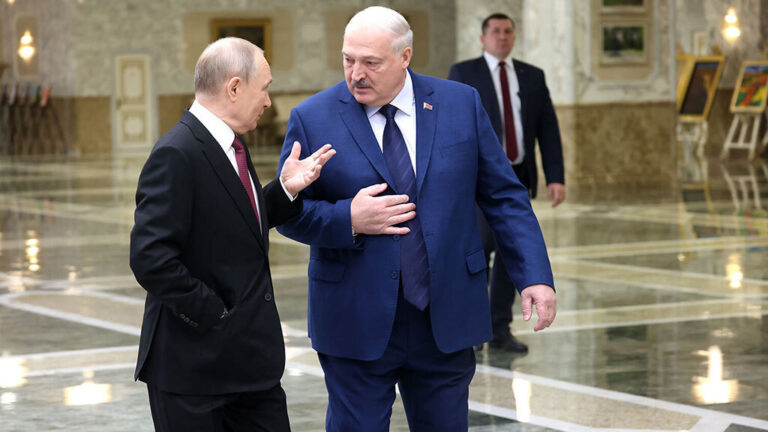Russia’s deployment of the “Oreshnik” intercontinental ballistic missile (ICBM) in Belarus is poised to heighten political and informational tensions across Europe.
For Lukashenko, this marks a raising of the stakes in case of any attempt to overthrow him. It’s a continuation of his effort to assert political agency, a goal he sought to achieve through Russia’s deployment of tactical nuclear weapons in 2022. In doing so, Lukashenko could gain both nuclear warheads and their delivery systems, such as ballistic missiles.

More on this story: Minsk joined Russia’s nuclear blackmail

More on this story: Risk indicators for tactical nuclear assault by Russia on targets in Europe
If the “Oreshnik” system is deployed in Belarus, the Kremlin will break all nonproliferation agreements on weapons of mass destruction, dismantling the international framework for deterrence and containment. This opens the door for other nations seeking nuclear weapons to follow suit, emboldened by Russia and its ally.
We doubt Russia would actually use its nuclear arsenal to defend Lukashenko’s regime. Such doubts are supported by Moscow’s willingness to scale back its support for Assad’s regime in Syria. This suggests that the Kremlin, either directly or through official Minsk, may instead resort to nuclear threats from Belarusian territory to blackmail the West.
It’s clear that Russia is escalating its confrontation with the West, while simultaneously undermining Lukashenko’s regime and limiting his ability to restore dialogue with Europe. The idea of jointly selecting intercontinental ballistic missile targets in Belarus is an obvious trap for Lukashenko set by the Russians.

The Kremlin has already launched psychological operations (psyops), showcasing the missile’s flight time to NATO capitals. From December 10 to 13, airspace over the Kapustin Yar test site, commonly used for “Oreshnik” launches, is scheduled to be closed. This strongly suggests a planned test of the ICBM.
While initially designed exclusively as a nuclear delivery system, the “Oreshnik” was reportedly deployed in a conventional configuration during its first use in Dnipro, albeit without an active warhead.
Technical and Strategic Implications
The recent strike on Dnipro demonstrated the missile’s limited capability in its conventional configuration, rendering it less effective than the 9M723 missile of the Iskander tactical ballistic missile system. However, Russian propaganda amplifies “Oreshnik’s” conventional role as a psychological tool aimed at intimidating Western audiences.
This mirrors earlier efforts to exaggerate the capabilities of systems like the Kinzhal hypersonic missile. Despite initial claims of the Kinzhal’s “unparalleled” and “interception-proof” technology, practical use revealed its vulnerability to systems like Patriot and SAMP/T. Such hyperbolic claims suggest the Kremlin is compensating for its technological shortcomings and dwindling arsenal through information warfare.
Key Concerns About “Oreshnik”
- Accuracy and Reliability:
Designed for nuclear payloads, the “Oreshnik” was not optimized for conventional use, resulting in a high probability of imprecise targeting when re-entering the atmosphere. This, coupled with its high cost, makes it unsuitable for conventional strikes. Misfires could pose risks to regions in NATO member states such as Poland, Hungary, or Slovakia. - Propaganda Over Substance:
The deployment of “Oreshnik” appears aimed more at creating psychological and propagandistic pressure than achieving tactical gains. Its likely antiquated technology suggests it may be a reconfiguration of the older RSD-10 Pioneer system, requiring real-world testing for operational viability. - Potential Risks of Escalation:
The Kremlin could use “Oreshnik” for strikes on Ukrainian regions bordering NATO countries to maximize psychological and geopolitical impact. Test launches targeting Kyiv or western regions near Europe may be intended to intimidate NATO and amplify Russia’s strategic narrative.
While the “Oreshnik” poses limited tactical advantages, its use underscores Russia’s reliance on psychological operations and propaganda to project strength amid technological stagnation. Any further deployment would risk unintended escalations, especially if misfires impact NATO territories.

More on this story: Russia’s Nuclear Blackmail as a Tool to Pressure the West

More on this story: Russia’s nuclear threats: risks and responsive options

More on this story: Russia’s nuclear arsenal seems grossly exaggerated




